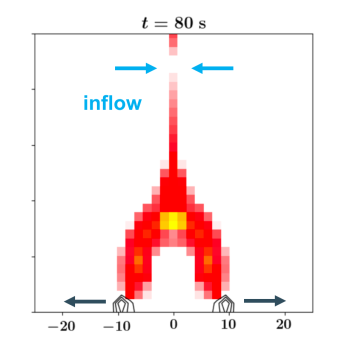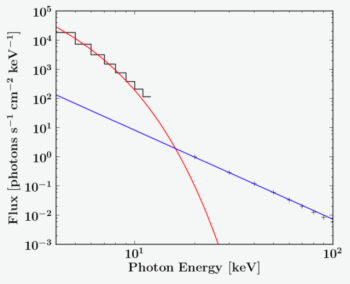Self-Consistent Flare Model
| Nugget | |
|---|---|
| Number: | 393 |
| 1st Author: | Wenzhi RUAN |
| 2nd Author: | Rony KEPPENS |
| Published: | 2 November 2020 |
| Next Nugget: | TBD |
| Previous Nugget: | Hot Flare Onsets |
Introduction
What is the "standard model" of a solar flare? To one camp of theorists, it is the MHD description offered by the "CSHKP" model: magnetic reconnection in a current sheet formed by opened bipolar fields produces flare loops. This can be 2D, as originally proposed, or somewhat more realistically, 3D. To another camp, the standard model is 1D and has no MHD at all! Instead it produces flare effects via non-thermal particle beams and we normally term it the "thick target" model.
Each of these basically disjoint models explain the observations in different ways: theoretically, as a fluid (in CSHKP), or as plasma particles (as in the "thick target" approximation for X-ray emission). In Ref. [1] we describe a self-consistent flare model embracing both of these conceptual umbrellas..
The model
The model consists of numerical simulation in which magnetic energy, when released, reappears in the form of fast electrons as inferred from hard X-ray observations of typical flares. These therefore dissipate the magnetic energy, but do not heat the plasma locally. Instead they propagate relatively collisionlessly, following the Larmor motion dictated by the evolving magnetic field, until they stop collisionally. In an atmosphere structured by hydrostatic equilibrium, this means the footpoint regions of the magnetic field.
Figure~1 shows simulation results, for one step in the time series, converted to soft X-ray (6-12 keV) and hard X-ray (25-50 keV) intensities. This is how it would appear to current observing facilities such as RHESSI, though the model has higher resolution. Note, interestingly, that the "above the loop-top" source discovered by Masuda does not appear.
The model successfully describes ribbon motion as traced by the flow of magnetic flux into the reconnecting current sheet, and reflected in the motions of the flare ribbons (e.g., Ref. [2]) as well as the double-footpoint appearance of the hard X-ray sources. These are bright because the electron beams, modeled as resulting directly from the energy release, can traverse the low-density corona and wind up at the footpoint regions. Another major test is the "Neupert Effect," whereby the hard X-rays appear at the same time as the upward flows of mass begin to fill the coronal loops with hot plasma. Figure 2 shows model spectra matching this kind of observation.
Conclusion
This has described a self-consistent model that simultaneously has the MHD properties of the CSHKP picture, as well as the particle properties of the thick-target picture. Although many details remain to be ironed out, this success forms an excellent basis for comparisons with data, and hence to check whether the physics included in the modeling needs adjustment or augmentation.
References
[1] "A Fully Self-consistent Model for Solar Flares"
[2] "Motion of Flare Footpoint Emission and Inferred Electric Field in Reconnecting Current Sheets"

